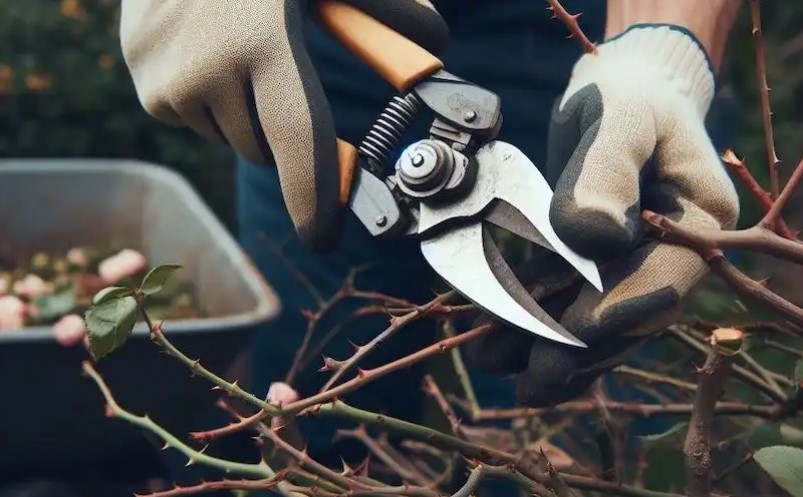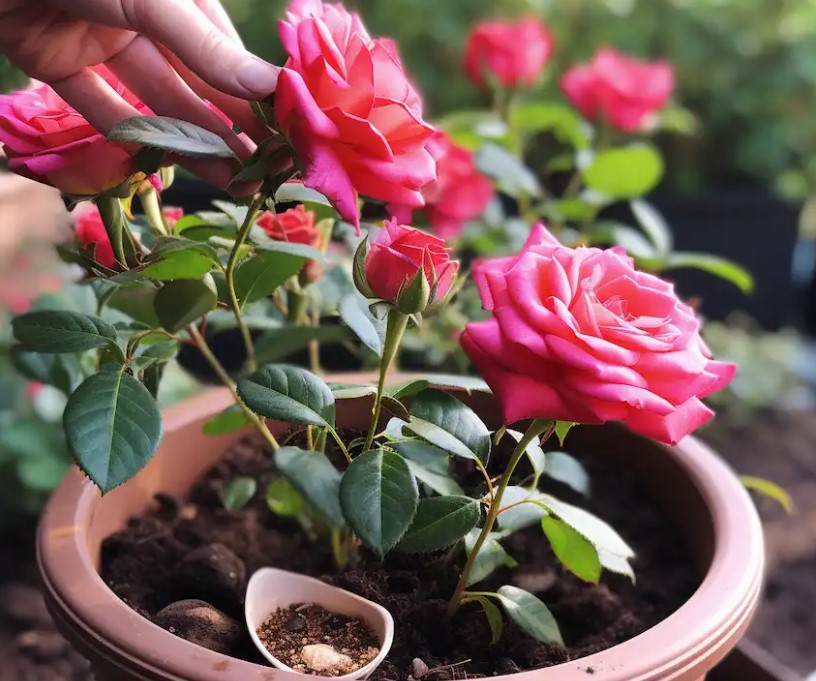
Pruning roses is essential for maintaining their health, encouraging growth, and ensuring a bountiful display of blooms. While the thought of cutting back your beloved rose bushes may seem daunting, following a simple step-by-step process can demystify the task. Here’s how (and when) to prune your roses in 7 straightforward steps, ensuring they thrive and continue to beautify your garden year after year.
1. Knowing When to Prune

Timing is Everything: The ideal time to prune roses is in late winter or early spring, just as the plants break dormancy and before new growth starts. This typically falls between late February and April in most climates, but the exact timing can vary depending on your local weather conditions and rose variety.
2. Preparing Your Tools
Essential Equipment: Ensure you have clean, sharp bypass pruners, gloves, and optionally, lopping shears and a pruning saw for larger branches. Disinfect your tools with rubbing alcohol or a bleach solution to prevent disease spread.
3. Assessing Your Rose Bush
Observation First: Before making any cuts, take a moment to inspect your rose bush. Identify dead, diseased, or damaged wood, which should be removed. Look for any branches that cross or rub against each other, as these can create wounds that invite disease.
4. Making the First Cuts
Clear the Dead and Diseased: Begin by removing any dead, diseased, or damaged wood. Cut these branches back to healthy tissue, ensuring a clean cut that angles away from the center of the plant to promote water runoff.
5. Thinning for Air and Light
Promote Good Airflow: Remove any thin, weak growth and interior branches that crowd the center of the bush. This thinning process helps improve air circulation and light penetration, essential for healthy growth and flowering.
6. Shaping the Bush
Form and Function: After cleaning up the rose bush, focus on shaping it. Aim to create an open vase shape, which allows for optimal air flow and light exposure. Make cuts about 1/4 inch above an outward-facing bud, slanting the cut away from the bud to encourage growth in the desired direction.
7. Final Touches
Seal and Clean: After pruning, some gardeners like to apply a sealing compound to larger cuts to protect against pests and diseases, though this is optional and often not necessary. Clean up all removed foliage and branches from around the bush to prevent disease and pest issues.

Aftercare
Post-Pruning Care: Water your roses well after pruning to help them recover and establish new growth. Consider applying a balanced fertilizer once new growth appears, following the recommendations for your specific rose variety and soil type.
Pruning roses may seem like a complex task, but by following these seven steps, you can confidently care for your roses, encouraging healthy growth and abundant blooms. Remember, the goal of pruning is not just to shape your rose bushes but to ensure their overall health and vitality, setting the stage for a spectacular floral display. With practice, pruning will become an enjoyable part of your gardening routine, offering a moment to connect with your plants and contribute to their beauty and well-being.

